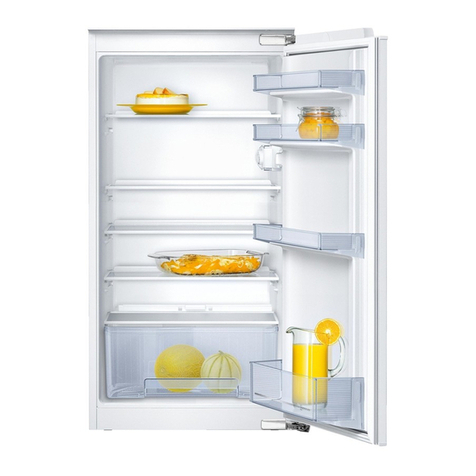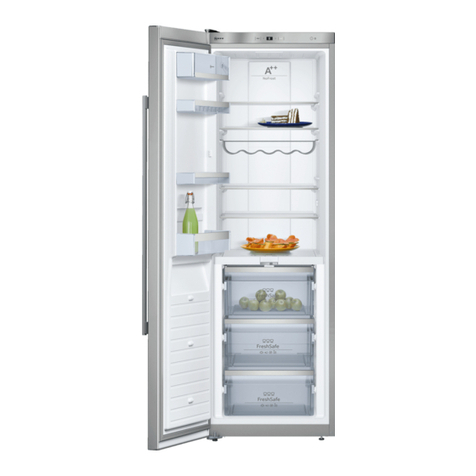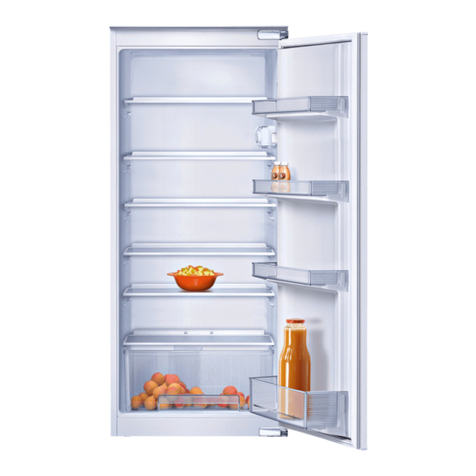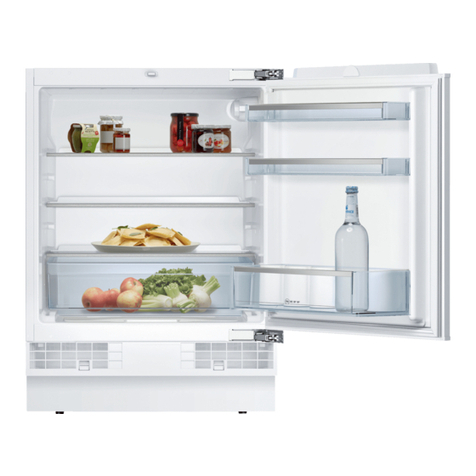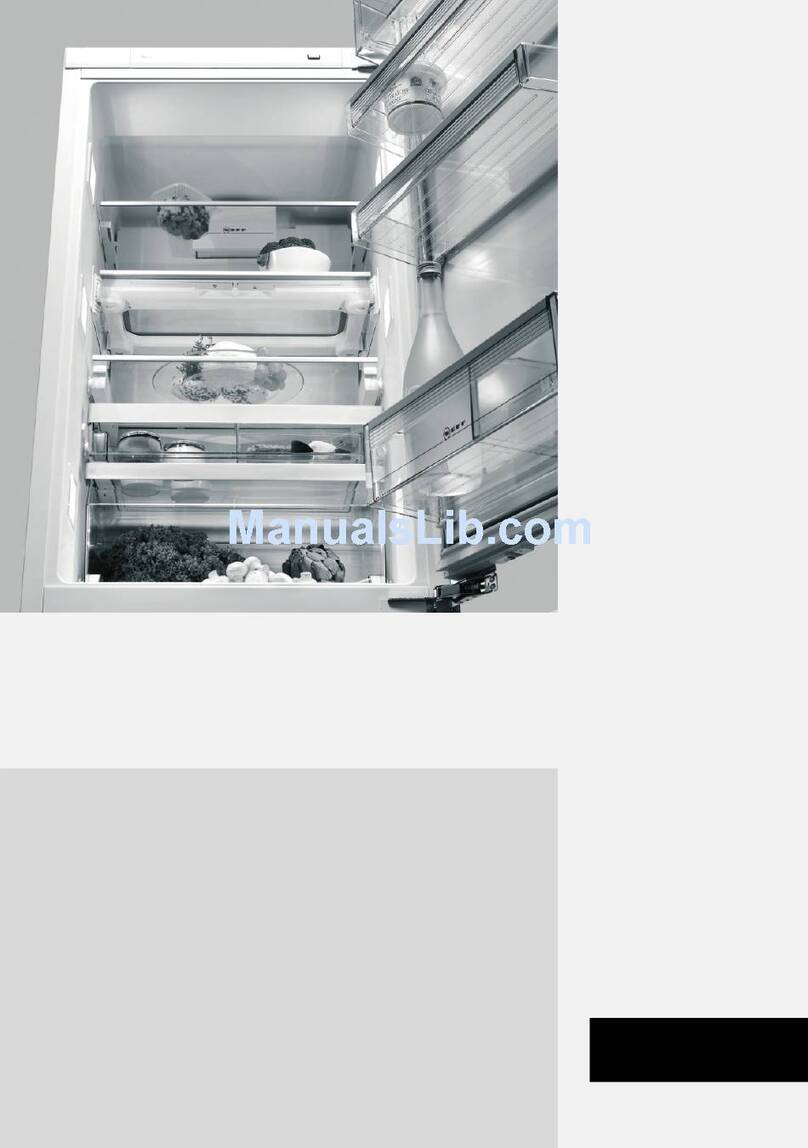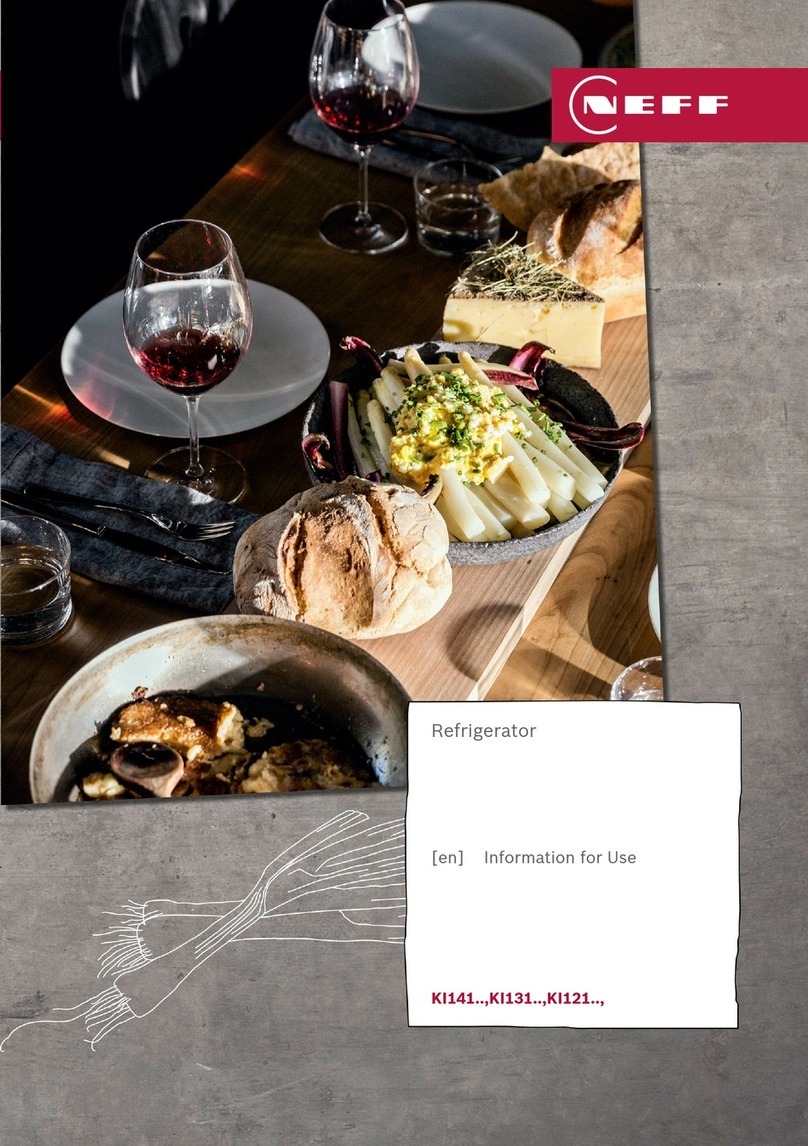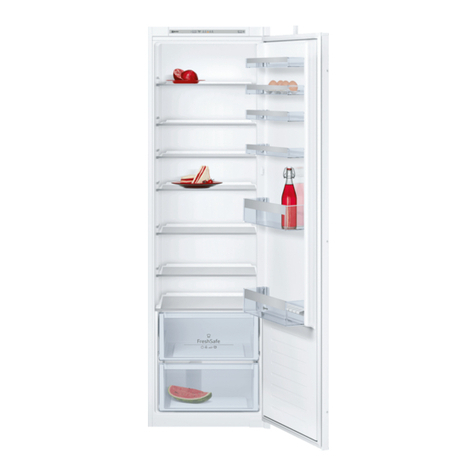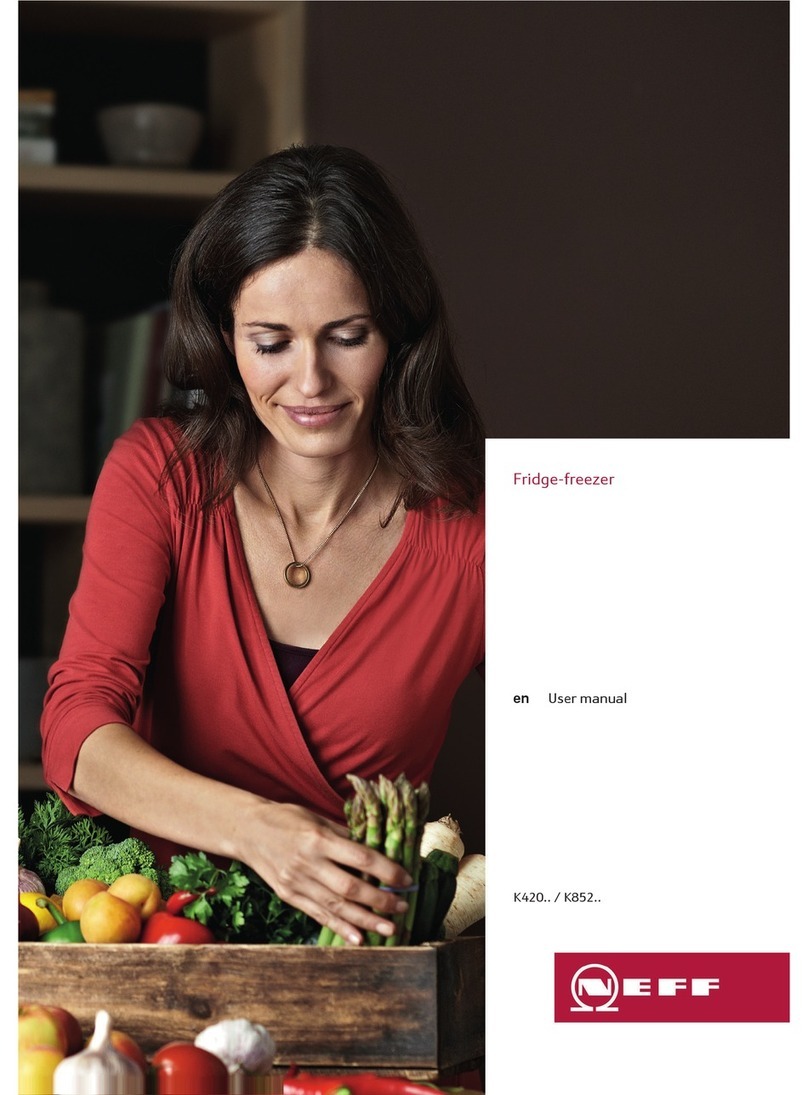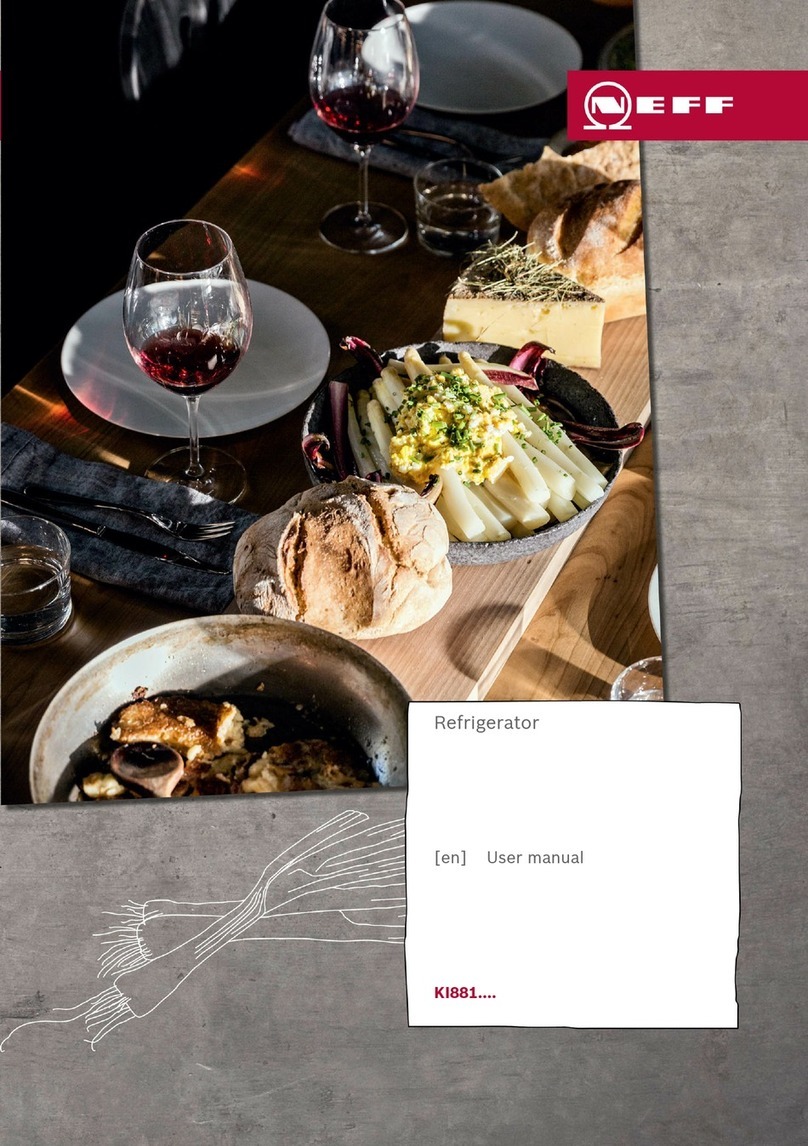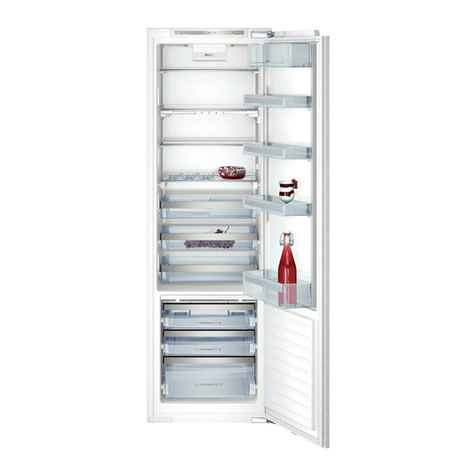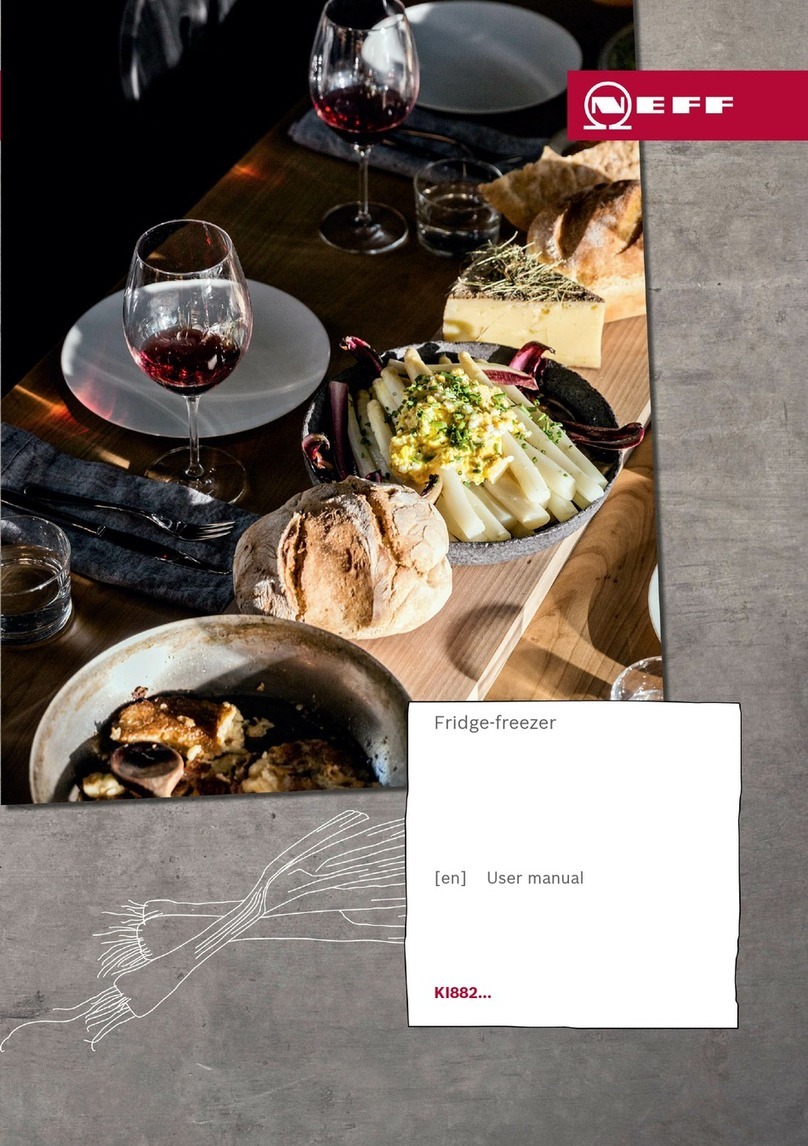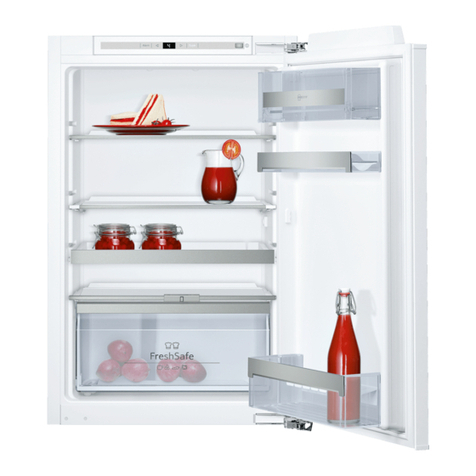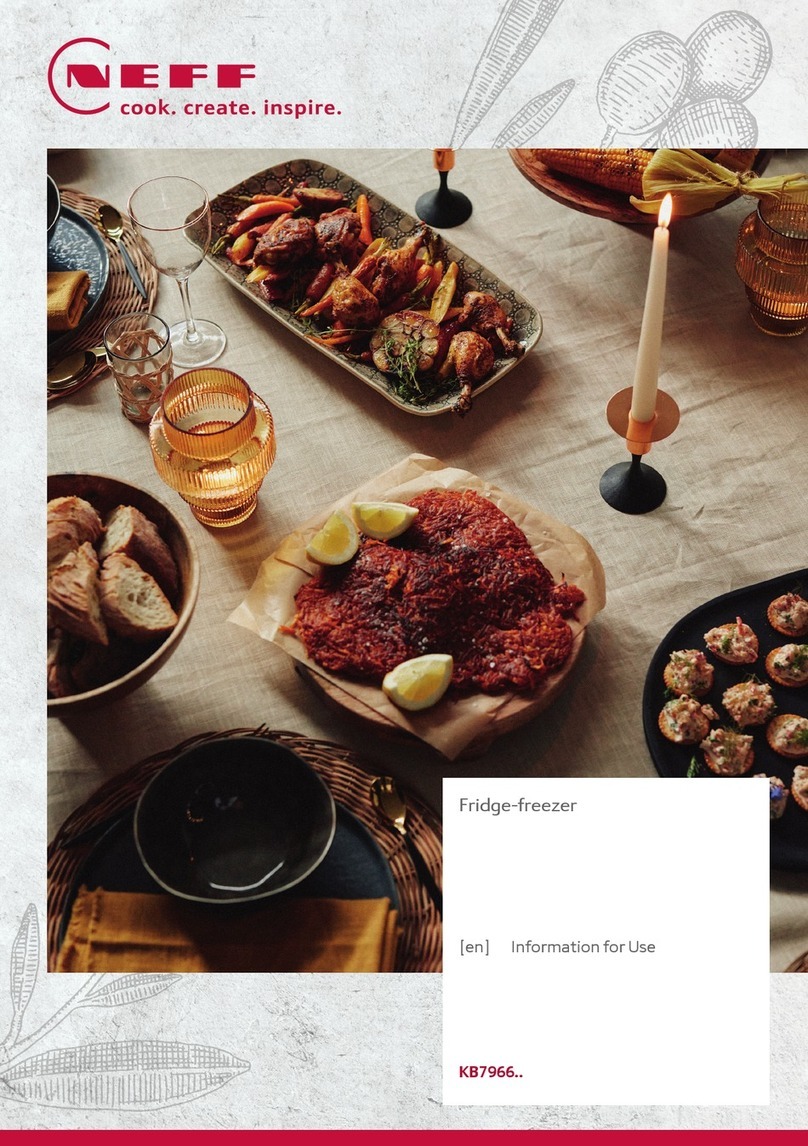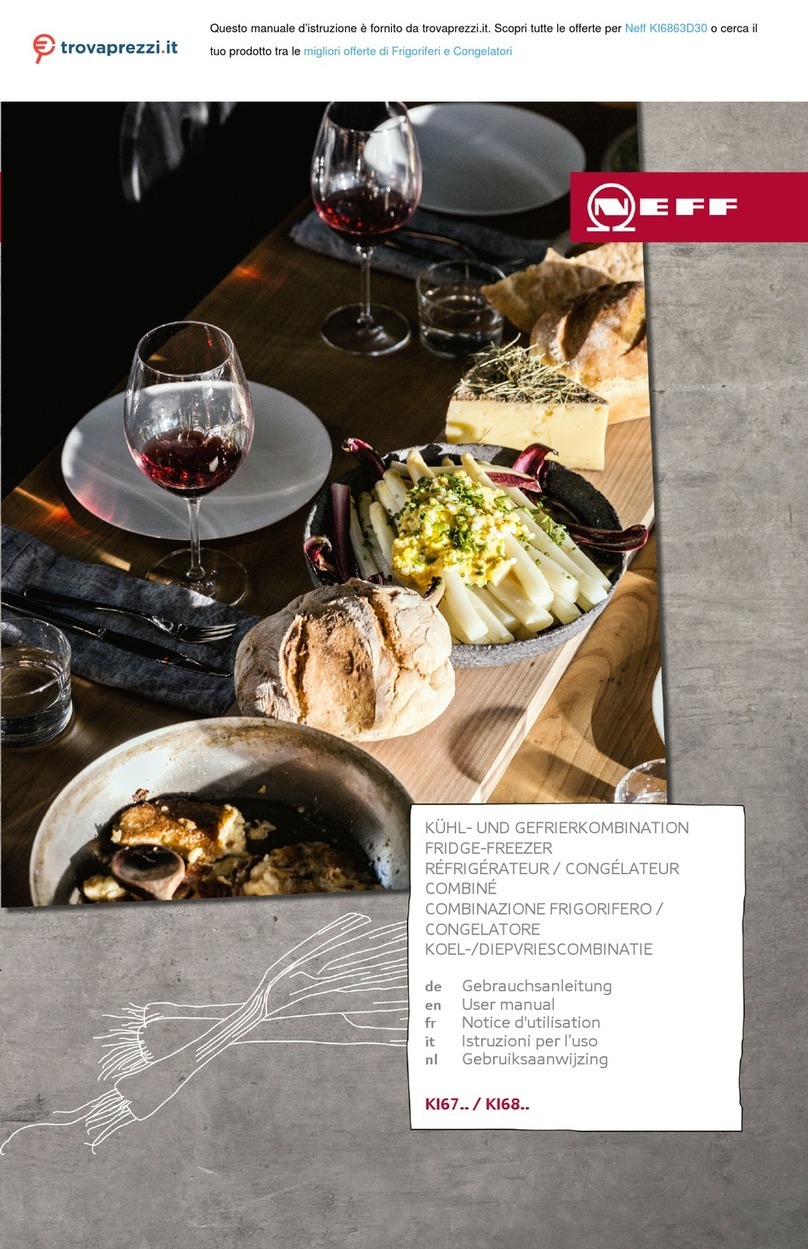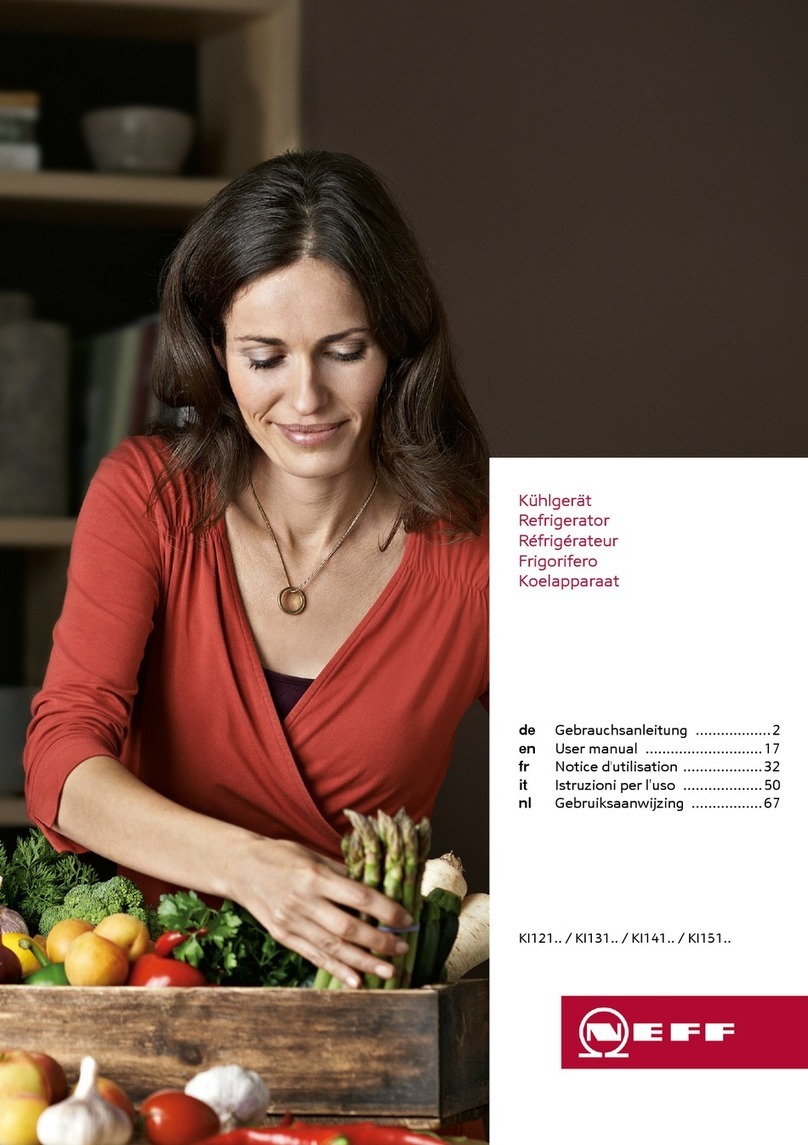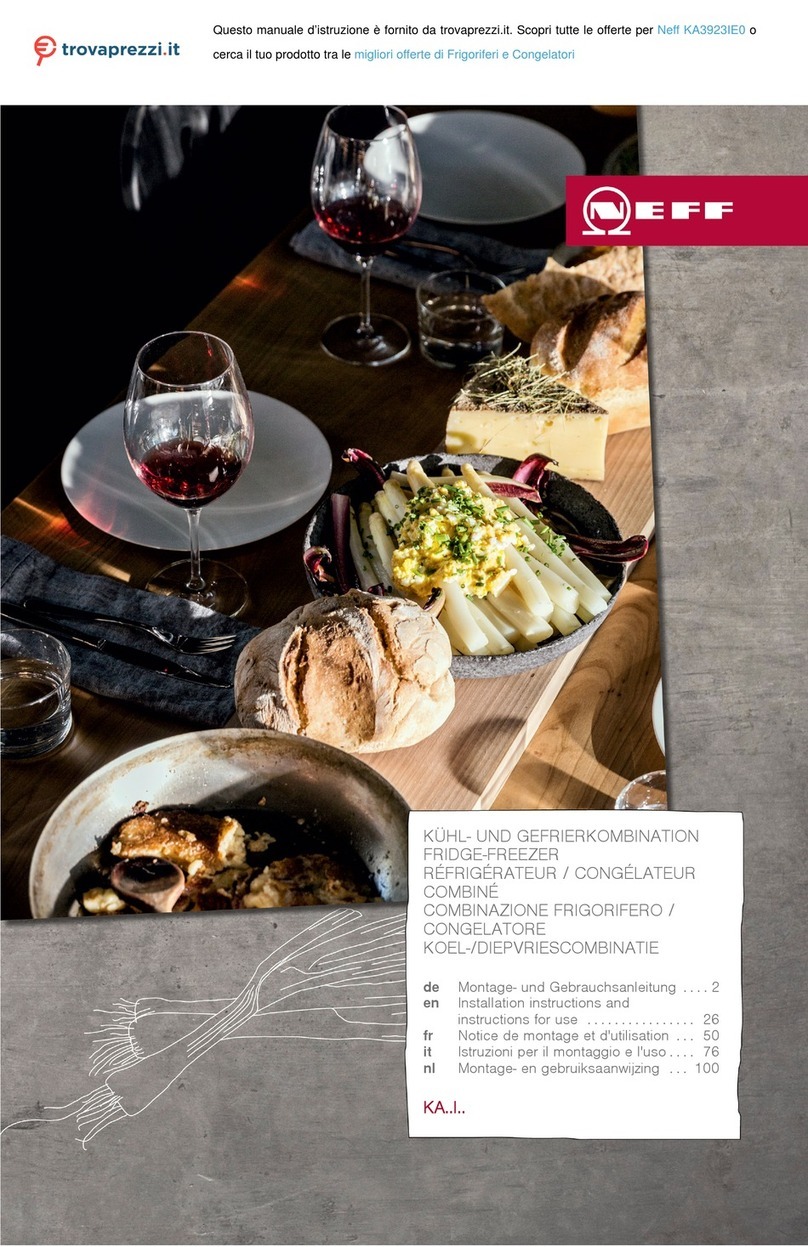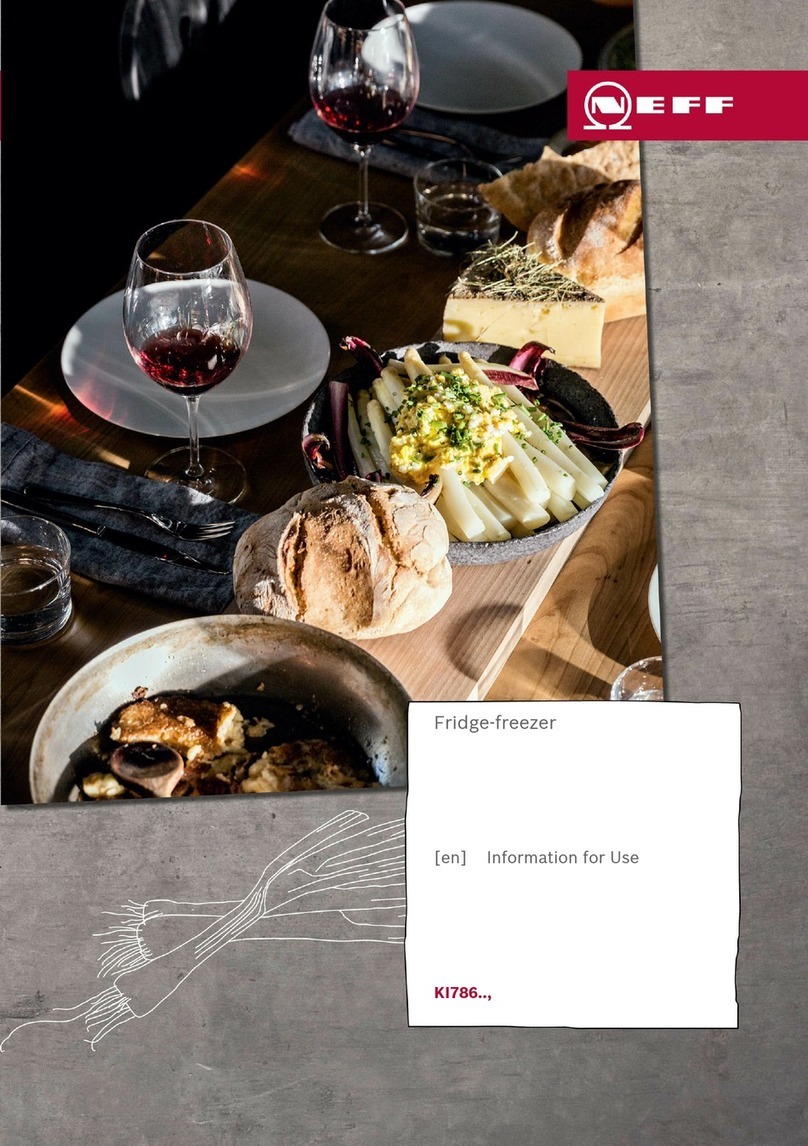
en
2
Table of contents
1 Safety............................................4
1.1 General information....................4
1.2 Intended use...............................4
1.3 Restriction on user group...........4
1.4 Safe transport.............................4
1.5 Safe installation ..........................5
1.6 Safe use .....................................6
1.7 Damaged appliance...................7
2 Preventing material damage .......9
3 Environmental protection and
saving energy...............................9
3.1 Disposing of packaging .............9
3.2 Saving energy.............................9
4 Installation and connection.........9
4.1 Scope of delivery........................9
4.2 Criteria for the installation
location .....................................10
4.3 Installing the appliance ............11
4.4 Preparing the appliance for
the first time..............................11
4.5 Connecting the appliance to
the electricity supply.................11
5 Familiarising yourself with
your appliance............................12
5.1 Appliance .................................12
5.2 Control panel............................13
6 Features......................................14
6.1 Shelf..........................................14
6.2 Variable shelf............................14
6.3 Extendable shelf .......................14
6.4 Fruit and vegetable con-
tainer.........................................14
6.5 Cool-fresh container .................15
6.6 Butter and cheese compart-
ment..........................................15
6.7 Door rack..................................15
6.8 Accessories..............................15
7 Basic operation ..........................15
7.1 Switching on the appliance ......15
7.2 Operating tips...........................15
7.3 Switching off the appliance ......16
7.4 Setting the temperature............16
8 Additional functions ..................16
8.1 Super cooling ..........................16
8.2 Automatic door-opening aid.....16
9 Alarm...........................................17
9.1 Door alarm ...............................17
10 HomeConnect .........................18
10.1 Setting up HomeConnect......18
10.2 Installing updates for the
Home Connect software ........18
10.3 Resetting HomeConnect
settings ...................................19
10.4 Data protection.......................19
11 Refrigerator compartment .......19
11.1 Tips for storing food in the
refrigerator compartment .......19
11.2 Chill zones in the refriger-
ator compartment...................20
12 Cool-fresh compartment..........20
12.1 Storage times in the cool-
fresh compartment at 0°C ....20
13 Defrosting.................................21
13.1 Defrosting in the refriger-
ator compartment...................21
13.2 Defrosting in the cool-fresh
compartment ..........................21
14 Cleaning and servicing ............21
14.1 Preparing the appliance for
cleaning ..................................21
14.2 Cleaning the appliance ..........21
14.3 Removing the fittings..............22
14.4 Removing appliance com-
ponents...................................23
